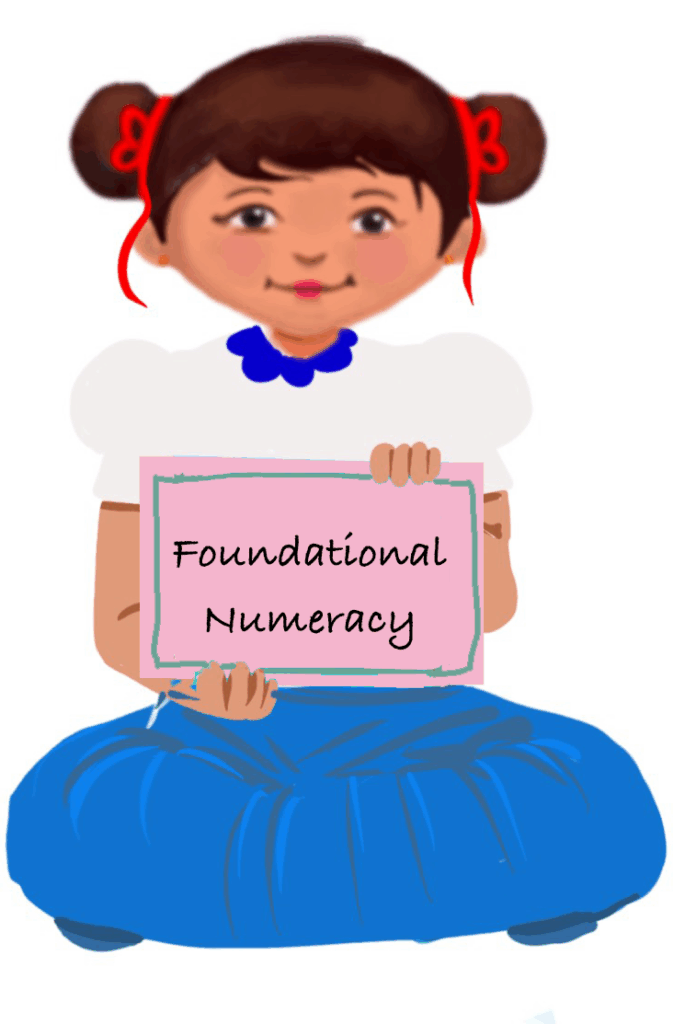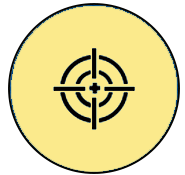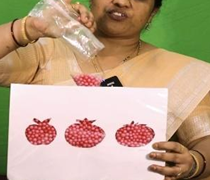
Primary Colours
 Objective
Objective
Help children recognize and understand primary colours through visual, tactile and cognitive engagement.
Estimated time to create the model for primary colours
1 to 1.5 hrs
Materials required for creating the model for primary colours
- Lid or bottom of a cardboard box (rectangular shaped) – 1 no.
- White Paper to cover the box
- Scrap plastic bottle
- Cut out the upper part of an old plastic bottle to get a funnel shaped piece
- Cello tape
- glue gun
- scissors
- cutter
- Fevicol
- printouts of outlines of different objects (sets of images for similar coloured objects)
- transparent sheet
- Thermocol balls in four primary colours – Red, Green, Blue and Yellow.
Preparation for activity
Keep the materials ready for making the model to demonstrate primary colours.
Procedure
- Take either the lid or bottom portion of an old cardboard box. Paste and cover the entire portion of the box with white paper, using fevicol.
- Choose one primary colour. Print the outline of two or three objects of this colour, on a white paper beforehand and keep it ready.
- Now using a cutter, carefully remove the inner portion of the printed outline of the individual objects. Now we have cutouts in the box in the shape of the images of the objects.
- Cover one side of the paper with a transparent sheet and fix it at the back, using Cello tape.
- Stick this paper to the open side of the box, which has been already prepared. Now, the hollow box is ready.
- Make a small hole in the centre portion on one of the longer sides of the box.
- Fix the funnel shaped cut-out made from the plastic bottle, into this hole. Now, the model is ready.
- Take the thermocol balls of the colour corresponding to the objects marked in the box.
- Ask each child to pour the thermocol balls of the respective colours into the box, through the funnel. Let them continue, until the box is full. Now the coloured balls shall show through the cut-out portions in the shape of the cutouts from the side of the box.
- After filling, seal the funnel with a plastic cover, so that the balls do not spill out while moving the box.
- Children can be asked to identify each of the objects appearing on the side of the box and their colour.
- Similarly, boxes can be prepared for displaying other primary colours also. Children may be asked to fill the boxes with the balls and identify the objects and colour.
Step by Step Pictures to create the model for primary colors






Important Tips
- Use locally available materials.
- Cardboard (from boxes) for structure and base.
- Thermocol beads/ paper bits/ pulses/ pompom balls for filling and sensory play.
- Transparent plastic sheets (e.g. from packaging) for sealing in small parts.
- Create spaces where the children can press or move beads.
- Use bright colours for visual interest.
Precautions
Precautions to be taken while preparing and using the model:
- Round off the corners to avoid sharp edges on cardboard.
- Secure thermocol beads well to avoid choking hazards.
- Ensure materials are non-toxic and clean.
- Reinforce edges with tape or extra layers of cardboard.
- If used frequently, clean surfaces regularly.
- Store in dry, flat spaces to prevent bending or wear and tear.
Troubleshooting:
Here are some common issues and troubleshooting tips to ensure the model works smoothly:
- Use stronger glue/tape or double-layered plastic sheet to avoid beads from falling out.
- Use thicker board or layer two pieces to prevent cardboard from bending.
- Children feel like peeling off the tape. So, tape the edges securely on the back; explain to them that it’s part of the game.
 Notes to the Teacher
Notes to the Teacher
- Show each fruit cutout and say the colour loudly. For example: “This is a red apple.”
- Let children touch and explore the texture through the transparent cover.
- Ask the children to look for things around the room that are of the same colour.
- Encourage them to pick an object (like a red toy or ball) that matches the colour.
- Use repetitions. Ask, “What colour is this?” Encourage responses.
- Associate colours with familiar objects (apple → red, banana → yellow).
Using the Learning Teaching Material
Let the children use the see and touch method – this improves retention.
Video: How to use Learning Teaching Material
| Source and Attribution of images All images used in the above Assets and Aids are originally created. |
| This digital material has been developed by the Sri Sathya Sai Vidya Vahini Inclusive Education Project, a unit of Sri Sathya Sai Central Trust, Prasanthi Nilayam, as a collaborative offering in the service of our nation. |